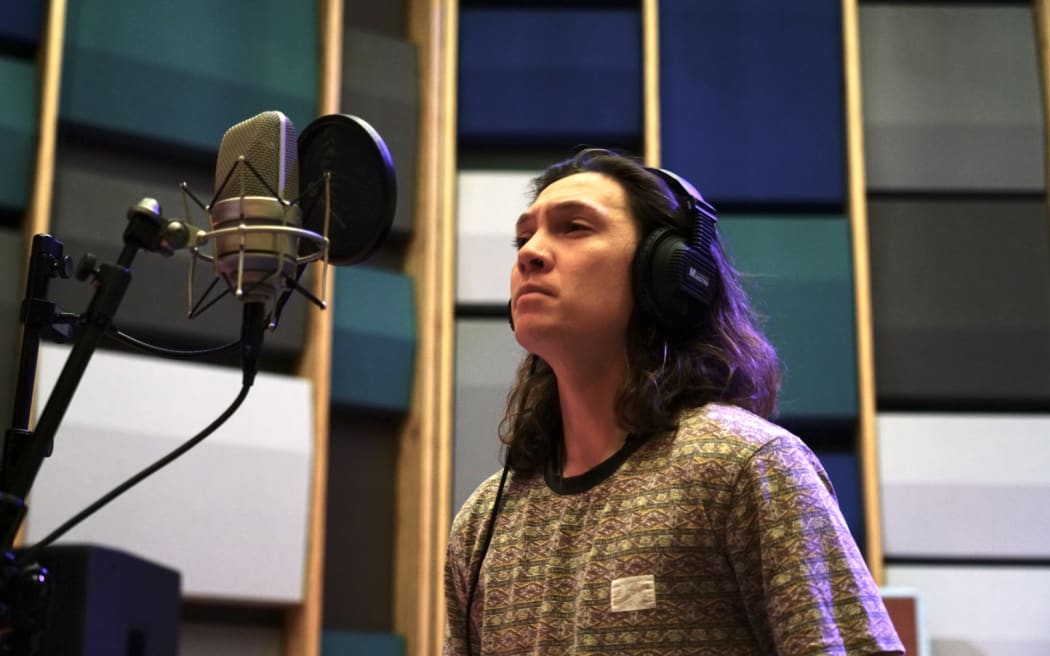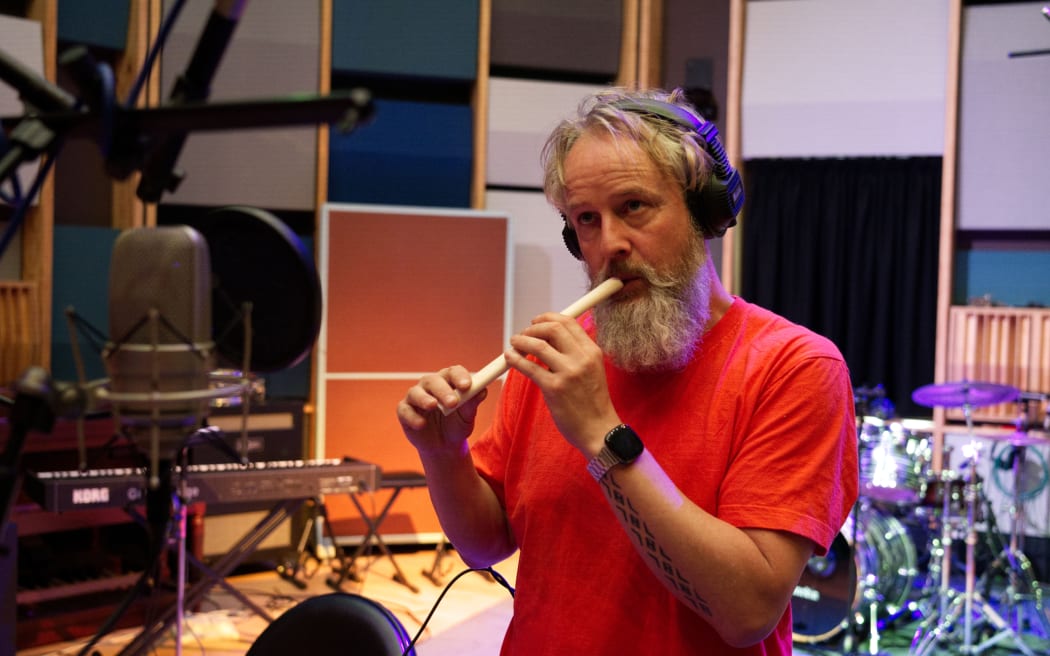
Ajay Peni Photo: University of Otago
A born and bred Chatham Islander, from the largest island, Rēkohu, musician Ajay Peni says the wildness, the ocean, the ruralness all feeds into his music. Through his nan’s side Ajay can trace his hokopapa, his genealogy, back to indigenous Moriori who first settled these islands.
Today he is playing his part in the revitalisation of Moriori culture, by bringing traditional Moriori songs, rongo, into contemporary times.
Follow Our Changing World on Apple Podcasts, Spotify, Stitcher, iHeartRADIO, Google Podcasts, RadioPublic or wherever you listen to your podcasts
Rongo
Through collaboration with the Hokotehi Moriori Trust Ajay has already been part of the creation of two collections of rongo – Hokotehi Me Rongo – featuring Ta Rē Moriori lyrics long ago recorded by Alexander Shand and Hirawanu Tapu.
He is currently working on another collection of rongo with the Trust, and alongside this, creating music for the Moriori, music and manawa project based at the University of Otago, with fellow musician Alistair Fraser.
Two remaining Moriori bone flutes

Dr Jennifer Cattermole Photo: Claire Concannon / RNZ
Dr Jennifer Cattermole is one of the co-leads of this project. An ethnomusicologist, she studies music in its social and cultural contexts. After scouring different sources of information, two remaining Moriori bone flutes were identified: one in the Canterbury Museum in Christchurch, the other in the Bishop Museum in Hawai’i.
But careful preservation of these mīheke oro (treasured musical instruments) in museums means that no one can touch them with their hands or play them. So how can they be used as part of the Moriori cultural revitalisation that has been happening for many years now?
Enter modern technology.
Careful CT scanning the two flutes meant that the tiny, nuanced details of their carving could be captured in digital form, and then translated into a 3D print design. As well as allowing experimentation of different materials to recreate the look, feel and sound of the flutes, the 3D-printed versions were used to guide a carving wānanga, where copies of the flute were made from what was likely the original material – albatross or hopo bone.
Multi-sensory exhibition
The new rongo created by Ajay, and the sounds of the mīheke oro played by Alistair, will feature in a multi-sensory exhibition that will be at Tūhura Otago Museum across July and August 2024. Deborah Goomes is the pō hapai (pillar that supports) for the project for the Hokotehi Moriori Trust, and she is excited about the exhibition as an opportunity to share Te Ao Moriori.
Listen to the episode to hear some of the rongo, the Moriori bone flutes being played, and the sounds of Rēkohu from items found on the seashore, plus learn more about the Moriori cultural revitalisation that has been taking place.

Alistair Fraser Photo: Steve Ting
To learn more:
-
Listen to the Hokotehi Me Rongo album, plus Ajay’s music with the band Black Robin is also inspired by his upbringing on Rēkohu.
-
The Aotearoa History Show covered the history of Moriori in their episode from Season 2 Ep 7: Moriori.
-
The Detail spoke to then Hokotehi Moriori Trust chair Maui Solomon in 2020 around the time of the Treaty settlement in their episode Setting aside the Moriori myth.
-
In 2010, Our Changing World covered the laser scanning of Moriori tree carvings.
-
Kiwa Hammond spoke to Kim Hill in June 2023 about the repatriation of Moriori skeletal remains from Germany and the revival of Moriori culture. The Detail long read Homeward Bound, written by Veronika Meduna, also tells the story of the mission to repatriate Moriori skeletal remains.


